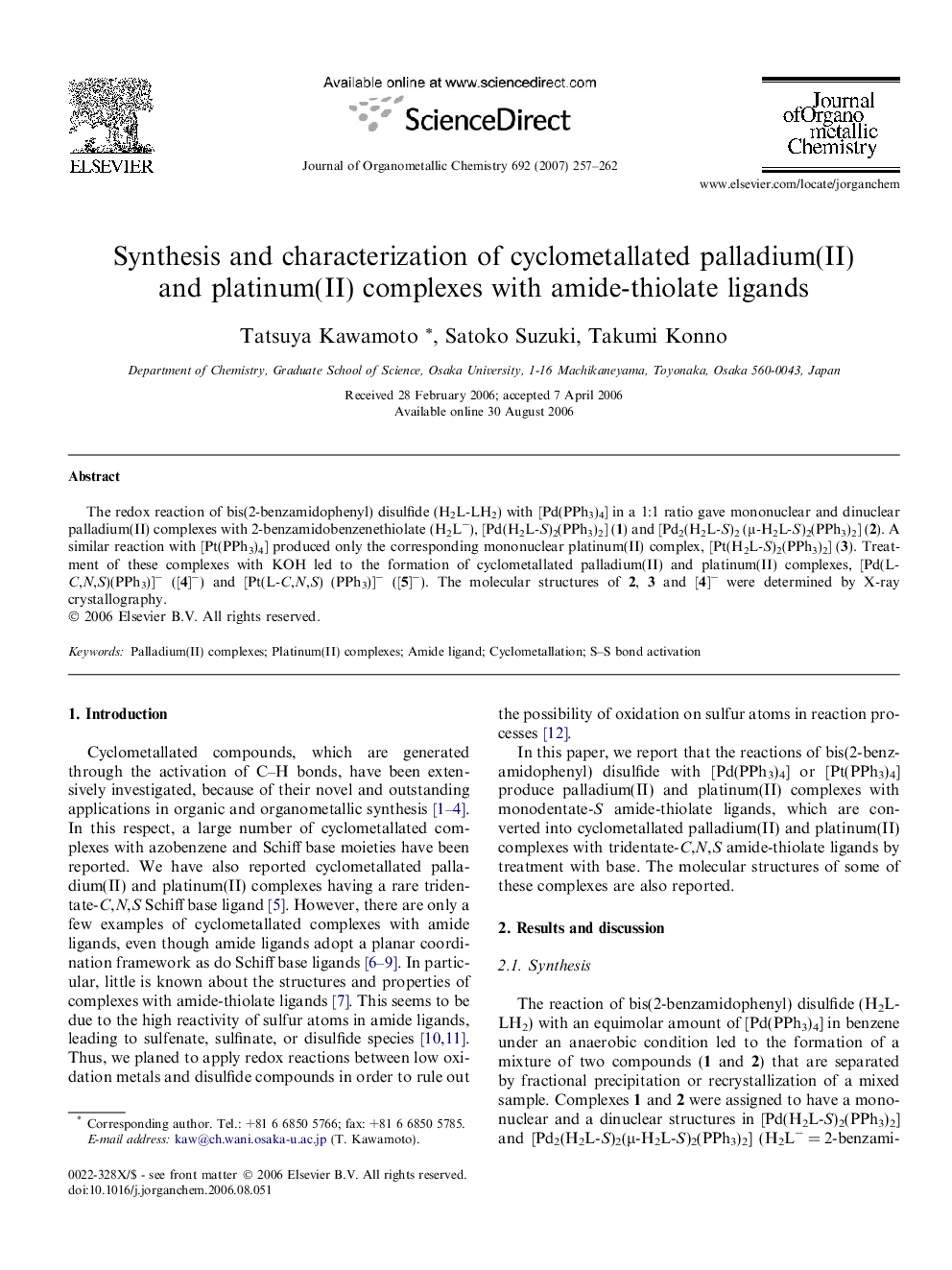| Article ID | Journal | Published Year | Pages | File Type |
|---|---|---|---|---|
| 1328315 | Journal of Organometallic Chemistry | 2007 | 6 Pages |
The redox reaction of bis(2-benzamidophenyl) disulfide (H2L-LH2) with [Pd(PPh3)4] in a 1:1 ratio gave mononuclear and dinuclear palladium(II) complexes with 2-benzamidobenzenethiolate (H2L−), [Pd(H2L-S)2(PPh3)2] (1) and [Pd2(H2L-S)2 (μ-H2L-S)2(PPh3)2] (2). A similar reaction with [Pt(PPh3)4] produced only the corresponding mononuclear platinum(II) complex, [Pt(H2L-S)2(PPh3)2] (3). Treatment of these complexes with KOH led to the formation of cyclometallated palladium(II) and platinum(II) complexes, [Pd(L-C,N,S)(PPh3)]− ([4]−) and [Pt(L-C,N,S) (PPh3)]− ([5]−). The molecular structures of 2, 3 and [4]− were determined by X-ray crystallography.
Graphical abstractCyclometallated complexes ([4]− and [5]−) with an amide-thiolate ligand were synthesized through the deprotonation of amide protons in mononuclear and dinuclear palladium(II) (1 and 2) and mononuclear platinum(II) (3) complexes, which are formed from amide disulfide (H2L-LH2) and [Pd(PPh3)4] or [Pt(PPh3)4]. The structures of 2, 3 and [4]− were determined by X-ray diffraction.Figure optionsDownload full-size imageDownload as PowerPoint slide
